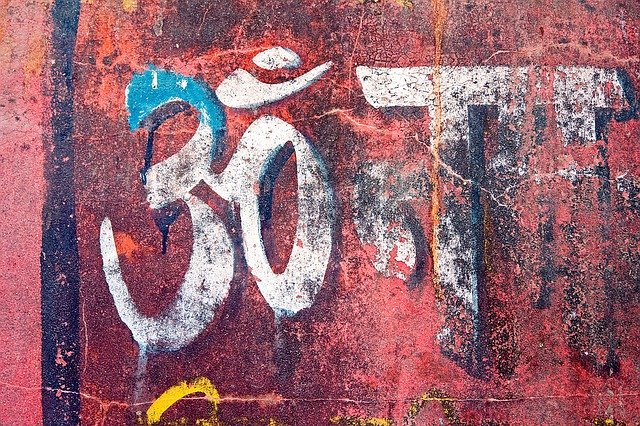Whether you’re just a beginner getting into yoga, someone who practices casually, or someone who is deeply involved in the philosophies and principles surrounding yoga, you’ve probably heard many Sanskrit terms being used. As someone who may wish to dive deeper into the yogi lifestyle, learning the common Sanskirt terminology and understand the names connected to the postures may deepen your understanding of yoga itself.
As a casual practitioner, you may be simply curious about the language and how it came to be associated with yoga. Well, yoga was developed in ancient India during a time period where Sanskrit was the common tongue. For reference, the Bhagavad Gita and Patanjali’s Yoga Sutras were written during the same time period. To this day lots of yoga studios refer to the postures by their Sanskrit names, and hence may yogis feel a connection to the language, or at least a desire to learn the basics.
If you wish to understand more about the poses you’re taking, and what their names mean, here are 20 Sanskrit word for positive energy you may have come across, with the meaning.
Adho: Adho is the Sanskrit term for ‘downward’ and in yoga postures, it indicates postures which involve turning your body towards the ground. An example is the Adho Mukha Svanasana, known in English as the Downward Facing Dog.
Ahimsa: “Himsa” is the term for violence and cruelty, and ahimsa is the opposite. It means an absence of violence, but also kindness and compassion towards all. It is one of the first Yamas, or moral codes in yoga to live by.
Ananda: This is defined as ecstasy and a state of pure bliss. ‘Ananda’ is categorized as a state of utter joy and love, and is used in the name of Ananda Balasana, or the Happy Baby Pose. This state of pure bliss is often attributed to children, hence the name of the posture.
Asana: These are the postures of yoga. It literally means ‘seat’, and all the yoga postures have names that end in Asana, indicating the fact that they’re referring to a posture of yoga. This also refers to the third limb of Patanjali’s eightfold path.
Ashtanga-Yoga: Known as the ‘Eight Limbs’ of yoga, this is the eightfold path laid out by Patanjali.
Ayurveda: Translates directly to ‘Life Science’, it is one of India’s traditional medicine system that uses herbs and natural remedies to cure illnesses.
Chakra: The ‘Chakras’ refer to the seven energy centres in the body, each associated with a specific emotion, system, and colour.
Citta: The Sanskrit word for ‘mind’, and refers to that which is consciousness. It is a word closely associated with meditation and mindfulness.
Dharma: The teaching of Buddha that leads to one’s life purpose, and eventually to enlightenment and the ultimate truth.
Dhyana: This refers to meditation, the seventh limb of Patanjali’s eight limbs of yoga. Every type of meditation comes under Dhayna, and is an important aspect of mindfulness.
Drishti: The word means ‘view’ or ‘sight’, and is a technique of directing the focus of gaze to help with concentration and focus during meditation.
Dwi: The word for two, and it is often used in yoga pose names like Dwi Hasta Bhujasana, or the two-handed arm pose.
Eka: Meaning ‘one’, this word is used in many yoga postures to refer to an engaged limb, that may be bent or stretched. An example is Eka Pada Rajakapotasana or the One Leg Pigeon Pose.
Guru: This word directly translates to ‘he who is heavy’ or ‘weighty’, and refers to a spiritual teacher who guides you on your path of awakening, and grants knowledge.
Hatha: This word is the combination of ‘ha’ and ‘tha’, which means the sun and moon. The practice of Hatha Yoga is focused on balancing the sun and moon energy in the body.
Japa: This is the recitation of a prayer or a mantra, and is commonly a part of Bhakti yoga.
Karma: The law of cause and effect, and the philosophy of what you give out into the world comes back to you. The belief that your actions dictate your fate.
Mantra: A sacred word or phrase, that has a transformative and calming effect on the mind of the one who is chanting it. Often used in Bhakti yoga.
Mudra: A set of hand gestures or a specific hand gesture used to stimulate the flow of energy and intention in Yoga.
Namaste: The greeting recited at the start and end of a yoga class, to signify respect for each other.
Pranayama: The control of energy and its movement throughout the body with the help of conscious breathing and breath control.
As you become more familiar with the world and principles of yoga, you will be able to delve deeper into the language of Sanskrit that is so closely associated with yoga. You can choose to learn as much as you want about the language, and it will add to your experience when practising yoga.
If you want to learn more about yoga, and the philosophy surrounding yoga, consider joining Hith Yoga. It is one of the best yoga studios in Delhi and offers many different kinds of yoga to suit the individual, including yoga for diabetes, hypertension, Hatha yoga, and even prenatal yoga.



Add Comment